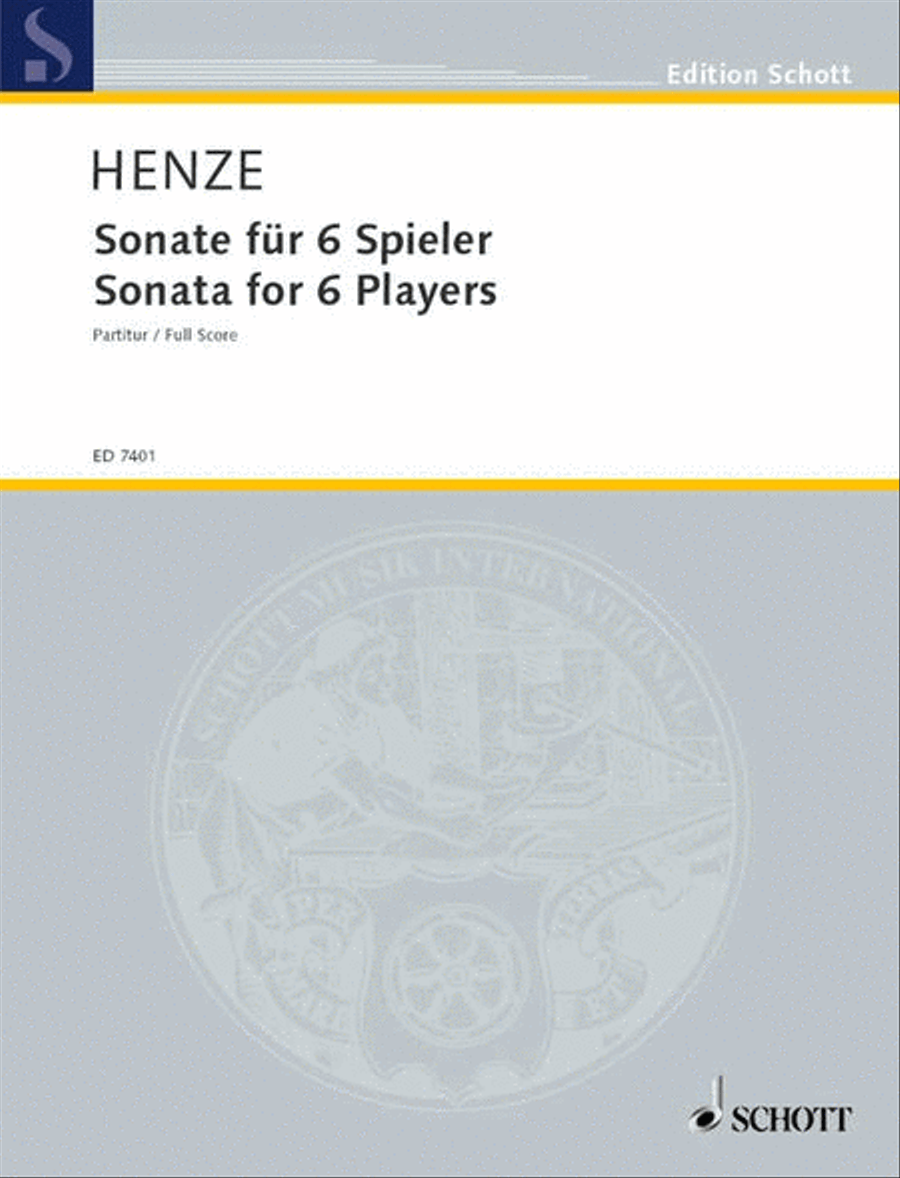Fl. (auch Altfl. u. 2 Sistr.) · Klar. (auch Bassklar., Kb.-Klar. ad lib. u. Handgl.) - S. (P. · Crot. · Marimba · chin. Glöckchen · Beck. · Gong · 2 Tamt. · gr. Tr. · Log Drum) - Klav. (auch Cel.) - Vl. (auch Va. u. Handgl.) · Vc. (auch Handgl.) ensemble - difficult - Digital Download SKU: S9.Q2922 Composed by Hans Werner Henze. This edition: score. Downloadable, Score. Duration 12 minutes. Schott Music - Digital #Q2922. Published by Schott Music - Digital (S9.Q2922). Hans Werner Henze used original music by Scarlatti, Handel and Vivaldi to evoke the baroque lifestyle for a TV film of José Montes-Baquer based on the novella Concierto Barocco by the Cuban Alejo Carpentier; the film music of Lâamour à mort by the French master director Alain Resnais was turned into a sonata by Henze.Filmmusik zu Alain Resnaisâ Film âLâamour à mort Alain Resnais hatte mich gebeten, das Vor-, Zwischen- und Nachspiel der Filmmusik so zu schreiben, daà diese den drei Hauptabschnitten, Sätzen bzw. Strukturen untergeordnet wären: Das Vor-spiel war sonatenförmig, das Zwischenspiel als Arie angelegt und das Nachspiel schlieÃlich eine Passacaglia. Die Form sowie das Fortschreiten dieser drei Sätze stehen im direkten Zusammenhang mit der Struktur des Films. Die Sonate enthält zwei kontrastierende Hauptelemente. Hiervon be-zieht sich das eine auf Elisabeth und ihre Ekstase der Liebe und Furcht; das andere verkörpert Bedrohung, Angst und tonales Symbol, das mit der ständig wachsenden Zahl von den Tod betref-fenden Bildern sowie der Faszination, die diese auf Simon aus-üben, in Zusammenhang steht. Der Sonatensatz endet mit dem Tod von Simon. Der zweite Satz, die MELODIE voller tragischer Akzente und versteckter Anspielungen auf Symbole und Gestik der Oper des 18. Jahrhunderts, enthält Hinweise auf den thematischen Stoff des ersten Satzes. Resnais bezeichnet dies als âla separation (die Trennung). Hierbei geht es um die Zeit zwischen Simons Tod und Elisabeths Entscheidung, ihm zu folgen. Im Film wird die MELODIE (deren Zeilen eine fast buchstäbliche Umsetzung des gesprochenen Textes sind, wie z.B. âje te promets (ich verspreche Dir), durch die Handlung und die Dialoge in regelmäÃigen Abständen durchbrochen, jedoch dann immer wieder aufgenommen. Vom Konzept her soll sie durchgängig gespielt werden. Die MELODIE verklingt ganz allmählich und nähert sich dem Rezitativ, ja Ausruf, so als wolle sie Elisabeth in ihrem Klagen und ihren Schmerzensschreien unterstützen und mit ihr sagen: âJe déteste la vie sans Simon (Ich verabscheue ein Leben ohne Simon). Die Passacaglia am Schluà stellt âle départ (den Abschied) dar. Der Bass, in der Regel von der Pauke gespielt, besteht aus den hohen Noten des Themas, das (von der Bassklarinette) im 1. Satz eingeführt worden war, um Simon im Reich der Toten zu zeigen. Fragmente und Erinnerungen an vorausgegangene Ereignisse werden durch den beharrlichen Bass im Herzschlag Rhythmus eingeworfen, wobei die Musik aus dem Reich der Toten allmählich von den untersten Registern, gleichsam einer Flut, aufsteigt, den gesamten Raum einnimmt und letztlich alles andere überdeckt und auslöscht. -Hans Werner Henze.
